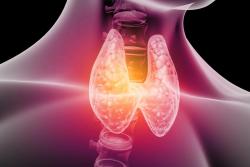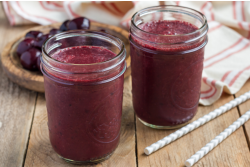Probiotics for Women's Health
Do you or your partner suffer with reoccurring vaginal irritation from time to time? Do you wonder what the cause may be and how to tackle this issue? Does it affect your sex life? If so, we are on hand to help.
Nowadays, most of us have heard of the gut microbiome in relation to gut health, but what about the vaginal microbiome[i] for a healthy vagina?
Millions of women worldwide are affected by poor vaginal health of some form in their lifetime. Symptoms such as soreness and itching in and around the vagina; abnormal vaginal discharge, with or without a smell; pain upon intercourse, and bleeding between periods, can be commonplace with many women who suffer.[ii]
The health of our vagina depends on several factors, namely a healthy balance of the hormones oestrogen and progesterone, good quality connective tissue, and a robust and diverse balance of beneficial bacteria that reside in the genital area which make up what we call the vaginal microbiome.[iii]
A healthy vaginal microbiome is composed mainly of the Lactobacillus strains, including L. acidophilus, L. gasseri, L. rhamnosus, and L. plantarum with some Bifidobacterium species.[iv] These strains produce lactic acid, which maintains the vaginal pH to be within the required 3.5-4.5. Maintaining this acidity prevents opportunistic bacteria from proliferating uncontrollably. Lactobacillus strains also exert a natural antimicrobial and anti-inflammatory effect, which keeps foreign bacteria at bay. Imbalances of these bacteria can result in infection, and/or inflammation, due to a drop in lactic acid production and hence reduced ability to have an antimicrobial effect.[v]
The vagina is made up of an epithelial barrier containing mucus proteins, to provide a lubricated physical barrier. This mucus is known to women as a clear healthy vaginal discharge that facilitates the vagina’s own cleaning process and prevents bacteria from adhering to the vaginal wall.[vi]
Oestrogen is particularly important to promote healthy epithelial and connective tissues of the vagina, therefore fluctuations in oestrogen levels have their part to play in the lubrication and balance of the vaginal microflora. Women who have hormonal imbalances are prime targets for reoccurring vaginal infections. Menstruation, pregnancy and menopause can also affect oestrogen levels, making women much more susceptible. [vii]
Other common causes of vaginal microbiome disruption include:
- Gut dysbiosis (imbalance of good and bad bacteria)
- High sugar diet, alcohol consumption
- Exposure to synthetic chemicals, toiletries, and fragrances that upset vaginal pH and bacteria
- Changes in the vaginal pH as a result of exposure to semen
- Vaginal douching
- Obesity
- Reduced immune function (due to stress, for example)
- Sexually transmitted diseases
- Medications: Oral Contraceptive Pill (OCP), Hormone Replacement Therapy (HRT), steroids,[viii] and antibiotics.
Pathogenic infections within the gut e.g. Escherichia coli (E. coli) and Candida are thought to directly affect bacterial composition of the vagina due to their ability to translocate to the vagina and multiply.[ix] Recent research has increasingly been able to link the state of the vaginal microbiome to conditions such as bacterial vaginosis and vaginal candidiasis; which shows just how important these little bugs are.[x]
Bacterial Vaginosis
Bacterial vaginosis (BV) is a vaginal infection that one in three women will develop at some point in their life. It is the most common cause of unusual vaginal discharge. BV results from the proliferation of pathogenic bacteria namely Gardnerella vaginalis and Mycoplasma hominis, which reduce the local colonies of beneficial bacteria, and hence reduce overall acidity, antimicrobial activity, and disrupt vaginal mucus production. This commonly presents itself through symptoms such as:
- Thin grey coloured discharge
- A strong fishy odour
- Vaginal itching, soreness and irritation[xi]
Statistics indicate that 30% of women between the ages of 20 to 50 have BV, many of which will be asymptomatic. Unfortunately, the conventional treatment of prescribing antibiotics, usually involves several rounds of treatment to eliminate the overgrowth of pathogens but in turn upsets the vaginal ecology and makes it hard to regain microbial balance.
In BV, dense biofilms (protective nets) on the epithelium are formed by pathogens which become resistant to Lactobacilli. This prevents the Lactobacilli from producing bacteriocins (natural, antibiotic-like substances), which inhibit pathogens associated with BV.[xii]
BV, if left untreated, increases risk of pregnancy complications (e.g. miscarriage), Urinary Tract Infections (UTIs) and STI’s. It is also associated with abnormal Pap smears or Pelvic Inflammatory Disease (PID), which can lead on to fertility problems, ectopic pregnancy, and endometritis.[xiii]
Vaginal candidiasis (also known as yeast Infection or thrush)
Three in four women suffer with at least one bout of vaginal candidiasis during their life and almost half of women have two or more. One of the most common causes of vaginal infections is an overgrowth of naturally occurring Candida strains, specifically Candida albicans. Candida is a yeast that can multiply rapidly, especially with increased pH and moist, warm conditions. However, with frequent use of antifungal treatments, other strains such as Candida glabrata are now being found in the vaginal make-up too, this is believed to be due to antifungal resistance.[xiv]
Common candidiasis symptoms include:
- itching
- a thick white discharge
- pain during sexual intercourse
- redness
- burning
- soreness
- swelling
Candida infections have been commonly linked with complications in pregnancy such as low birth weight and premature delivery.[xv]
Probiotics for vaginal infections
Since both diseases discussed above involve a similar disruption of the balance in vaginal microflora, the use of probiotics makes sense in these cases.
Research has shown that probiotics have the ability to reduce recurrence of infections by addressing bacterial imbalance. Probiotics work to balance Lactobacilli flora, and help to maintain a more acidic pH and block adhesion of pathogenic bacteria to the epithelial wall.[xvi]
The use of oral probiotics has shown to positively impact the vagina, since these can translocate from the rectal mucosa to the vagina to exert this positive effect. A combination of oral Lactobacillus strains, including L. acidophilus, can significantly reduce symptoms of bacterial vaginosis in seven days.Other Lactobacillus combinations, including L. rhamnosus, L. fermentum, and L. reuteri have shown similar positive results. Vaginal candidiasis has also been shown to respond in a similar way.[xvii],[xviii],[xix]
For immediate relief, vaginal administration can be more effective. Topical use of Lactobacillus in the form of creams or suppositories has been shown to reduce recurrence of bacterial vaginosis and vaginal candidiasis. One that has been found to be particularly beneficial is Lactobacillus gasseri.[xx]
How to achieve vaginal microflora balance:
- Balance blood sugars: pathogenic gut and vaginal bacteria thrive on sugar, therefore keeping sugar intake low and blood sugars balanced are very important to support gut and vaginal ecology. So minimise sweets, cakes, bread, pasta, and white potatoes. The sugar in alcohol can also drive reoccurrence and should be avoided.
- Heal the gut: intestinal dysbiosis, as discussed earlier, is commonly a preceding issue of chronic or recurrent vaginal infections. Rebalancing gut flora can help prevent recurrent vaginal infections. Foods with beneficial bacteria can help. These include live active culture yogurt, sauerkraut kimchi, and miso. Prebiotic foods can help feed these bacteria to ensure they flourish, vegetables are an excellent source including chicory, Jerusalem artichokes, garlic, onions, shallots, leeks, cabbage.
- Dehydration can significantly worsen dryness, impacting the production of our cleaning vaginal discharge. Avoid drinking a lot of caffeinated drinks like tea and coffee, alcohol can also have this effect.
- Environmental chemicals, such as bisphenol-A (BPA) from plastics and pesticides from non-organic produce, can negatively impact hormones. Therefore, switch to glass, paper, and stainless steel and buy organic food whenever possible.
- Reduce stress: high stress can affect vaginal health through activation of the sympathetic nervous system. An increase in cortisol inhibits oestrogen-associated vaginal epithelium activity and glycogen reduced Lactobacilli, therefore increasing pH and decreasing the anti-inflammatory properties. This leads to dysbiotic vaginal flora. Stress reduces immune system activity and therefore increases susceptibility for pathogens to take hold.
Prevention
- Wear cotton underwear, avoid tight clothing
- Stay away from vaginal douching – the vagina cleans itself and douching can disrupt this process
- Don't use perfumed feminine products or toilet paper
- Ensure you change tampons and sanitary towels frequently
- Avoid the use of chemical bleach on toilet seats – the fumes can disrupt microbial balance
In conclusion, oral and topical supplementation of a range of strains, especially Lactobacillus, has positive effects on the health of the vaginal microbiome.[xxi] This likely is a result of competitive bacterial inhibition, lowering of the pH, production of antibiotic and antifungal substances, and healthy stimulation of the immune system.
Got a question?
The brand you can talk to:
We have a team of Nutritionists at the end of our advice line, open to you, for product support and advice (5 days a week). 0121 433 8702, clinicalnutrition@biocare.co.uk or live chat with us.
Or head to our advice page where you can find Healthnotes.
Not registered for an account with BioCare®?
You can register now to receive up to date news, product information and exclusive offers whether you are a consumer, practitioner or retailer.
References
[i] Lamont, R., et al (2011). The vaginal microbiome: new information about genital tract flora using molecular based techniques. BJOG: An International Journal of Obstetrics & Gynaecology, 118(5), pp.533-549.
[ii] Carr P. et al .Evaluation and management of vaginitis. Journal of General Internal Medicine. 1998;13(5):335-346.
[iii] Wessels J. et al. The relationship between sex hormones, the vaginal microbiome and immunity in HIV-1 susceptibility in women. Disease Models & Mechanisms. 2018;11(9).
4 Vasquez A. Oral administration of Lactobacillus and Bifidobacterium strains of intestinal and vaginal origin to healthy human females: Re-isolation from faeces and vagina. Microbial Ecology in Health and Disease. 2005; 17 (1).
[v] Amabebe E. et al. The Vaginal Microenvironment: The Physiologic Role of Lactobacilli. Frontiers in Medicine. 2018:5.
[vi]D'Hondt F et al. Urinary tract infections in patients with spinal cord injuries. Curr Infect Dis Rep.2011; 13:544-51.
[vii] Naumova I. et al. Current treatment options for postmenopausal vaginal atrophy. International Journal of Women's Health. 2018;10:387-395.
[viii] Reid G. Has knowledge of the vaginal microbiome altered approaches to health and disease?. F1000Research. 2018;7:460.
[ix] Rodrigues C. et al. Candida sp. Infections in Patients with Diabetes Mellitus. Journal of Clinical Medicine. 2019; 8(1):76.
[x] Carr PL et al. Evaluation and Management of Vaginitis. J Gen Intern Med. 1998; 13(5): 335-46.
[xi] Onderdonk A. et al. The Human Microbiome during Bacterial Vaginosis. Clinical Microbiology Reviews. 2016;29(2):223-238.
[xii] Salas-Jara M. et al. Biofilm Forming Lactobacillus: New Challenges for the Development of Probiotics. Microorganisms.2016;4(3): p.35.
[xiii] Ralph S. et al. Influence of bacterial vaginosis on conception and miscarriage in the first trimester: cohort study. BMJ.1999; 319(7204):220-223.
[xiv] Fidel P. et al. Candida glabrata: Review of Epidemiology, Pathogenesis, and Clinical Disease with Comparison toC. albicans. Clinical Microbiology Reviews. (1999);12(1):80-96.
[xv] Rasti S. et al. Vaginal Candidiasis Complications on Pregnant Women. Jundishapur Journal of Microbiology. 2014;7(2).
[xvi] Sudha, M. et al. Effect of oral supplementation of the probiotic capsule UB-01BV in the treatment of patients with bacterial vaginosis. Beneficial Microbes. 2012; 3(2):151-155.
[xvii] Cribby S. et al. Vaginal Microbiota and the Use of Probiotics. 2019.
[xviii] Van de Wijgert J. et al.The global health impact of vaginal dysbiosis. Research in Microbiology.2017;168(9-10):859-864.
[xix] Reid G. et al. Oral use of Lactobacillus rhamnosusGR-1 and L. Fermentum RC-14 significantly alters vaginal flora: randomized, placebo-controlled trial in 64 healthy women. FEMS Immunology & Medical Microbiology. 2003; 35(2):131-134.
[xx] Tachedjian G. et al. The role of lactic acid production by probiotic Lactobacillus species in vaginal health. Research in Microbiology. 2017;168(9-10):782-792.
[xxi] Ya W et al. Efficacy of vaginal probiotic capsules for recurrent bacterial vaginosis: a double-blind, randomized, placebo-controlled study. Am J Obstet Gynecol. 2010; 203(2):120.e1-6.





